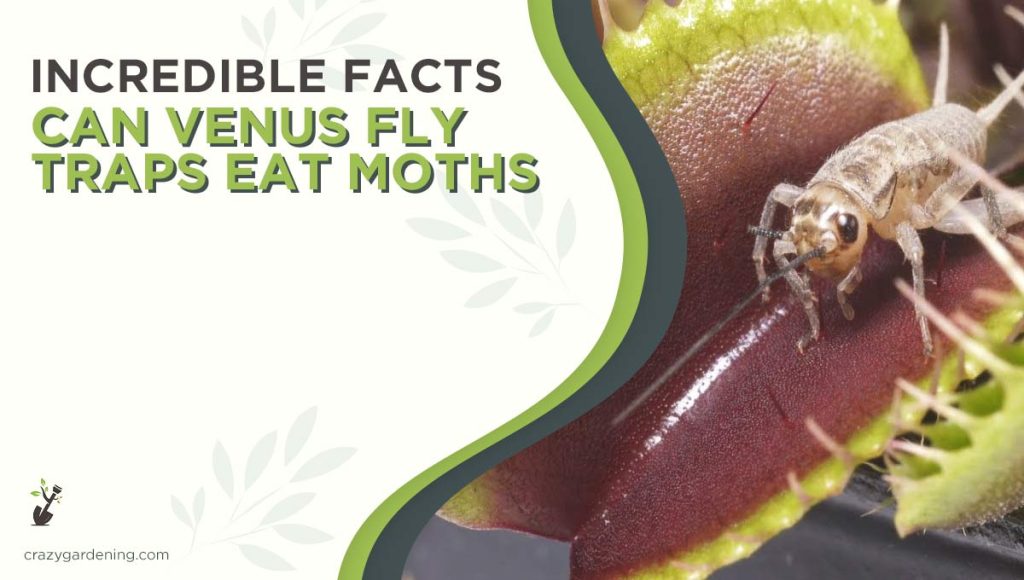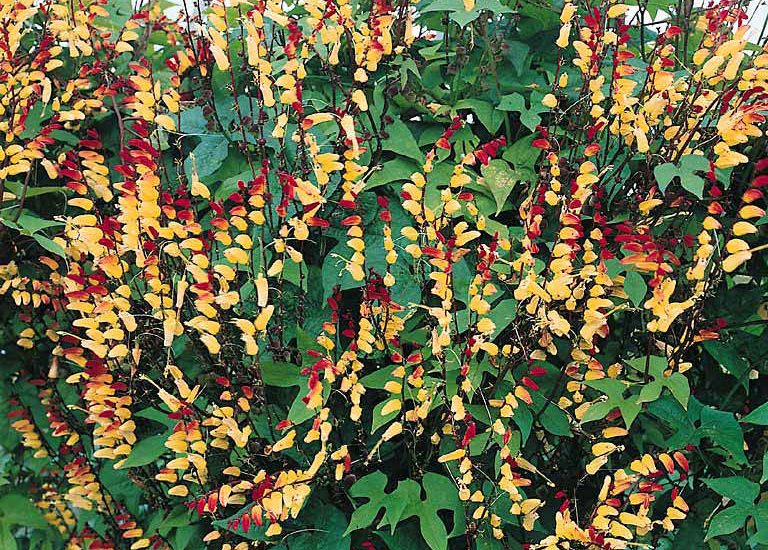Do Venus Fly Traps Eat Moths [Say Goodbye to Moths in 2025]
The Venus flytrap is a carnivorous plant that can eat small insects like flies and spiders. Some people think that the Venus flytrap can also eat large insects like moths, but is this true?
In this blog post, we will explore whether or not the Venus flytrap can eat moths and whether or not it is a good idea to try this.
We will also look at some of the benefits and drawbacks of feeding moths to Venus flytraps. Stay tuned!

Can Venus Fly Traps Eat Moths?
Swiftly closing their traps, Venus flytraps efficiently capture their prey. The lobes of the leaf seal in roughly half a second, and the plant then secrete digestive enzymes to devour the insect.
Insects can be caught in a Venus flytrap in approximately half a second, although some of the more nimble ones can outrun the trap.
However, a Venus flytrap would gladly consume a wayward moth if it cannot escape before the lobes seal shut.
Keep in mind, though, that despite having up to eight leaves per plant, each leaf can only digest one insect at a time, making this plant useless for pest management.
Larger insects can take up to 10 days to complete the digesting process, giving other insects plenty of time to find food and find new homes.
What Happens When Venus Flytraps Eat Moths?
Moths are larger than the typical prey of a Venus flytrap, and therefore may take longer to digest. However, they can still be successfully digested by the plant if they become trapped in its lobes.
The benefits of feeding moths to Venus flytraps include providing nutrients for the plant and reducing insect populations in your garden.
The drawbacks include potentially damaging the plant if it is not strong enough to digest larger prey, or if too many moths are fed at once.
Should You Feed Moths to Venus Flytraps?
It is important to note that feeding a Venus flytrap any type of prey should only be done sparingly.
These plants do not need to be constantly fed to survive, as they can obtain nutrients from the soil and natural prey in their environment.
Additionally, if you are considering feeding moths to your Venus flytrap, make sure that the plant is strong enough to handle the larger prey before attempting it.
It is also important to not overfeed your plant, as this can lead to damage or death of the flytrap.
It is also important to consider the nutritional value of feeding moths to your Venus flytrap. Moths do not necessarily provide as much nutrition as smaller insects like flies or spiders.
Some experts recommend only feeding your Venus flytrap live prey, as dead insects may not provide enough nutrients for the plant to thrive.
Ultimately, it is up to the individual grower to decide whether or not they want to risk feeding moths to their Venus flytrap.
Do Venus Fly Traps Eat Dead Moths?
It is not recommended to feed dead prey to a Venus flytrap, as it may not provide enough nutrition for the plant.
Additionally, dead insects can also attract fungi or bacteria that can harm the plant. It is best to only feed live insects to your Venus flytrap.
But it’s better to feed dead insects if not have other choices. Venus flytraps can be fed a variety of meals, including dead moths.
Before proceeding, check to see if the moth is quite little. Anything longer than a finger is likely to get caught in a trap that measures only 11.5 inches.
Smaller pieces of the bug can be easier to manage. Cut up a huge moth with a knife and toss the pieces into the trap. This method also works for other pests.
Only by doing so are huge insects suitable for Venus flytrap consumption.
Related Articles
* Can Venus Fly Traps Eat Ants
* Can Venus Fly Trap Eat Frog
* Can Venus Fly Traps Eat Strawberries
* Why is My Venus Fly Trap Drooping
* Can Venus Flytraps Eat Crickets](https://plantnative.org/gardening/can-venus-flytraps-eat-crickets/)[
* ](https://plantnative.org/gardening/anthurium-wendlingeri-care/)[Can Venus Fly Traps Eat Roaches
* ](https://plantnative.org/gardening/anthurium-pedatoradiatum-care/)Do Venus Fly Traps Eat Gnats[
Is It Bad to Feed Multiple Moths to Venus Fly Traps Simultaneously?
It is not recommended to feed multiple moths or larger insects to a Venus flytrap at the same time, as this can potentially harm or kill the plant.
It is important to only feed live prey that is small enough for the plant to handle and digest properly.
Instead of feeding multiple moths, it may be more beneficial for the plant to feed smaller insects, like flies or spiders, one at a time.
This allows the Venus flytrap to properly digest and absorb nutrients from each meal.
Overall, it is important to carefully consider what and how much you are feeding your Venus flytrap to ensure its health and longevity.
Conclusion
Overall, feeding moths to Venus flytraps can provide some benefits but should be done with caution and moderation.
Remember, these plants do not need constant feeding and can obtain nutrients from their natural environment.
Have fun experimenting with your carnivorous plant, but always keep its health and well-being in mind. Happy growing!
FAQs
Question
Do Venus flytraps eat clothes moths?
Answer
Your plant’s traps are specialized leaves that need to be fed regularly (about once a week to two weeks). Plants can go for long periods without being watered or nourished, but their growth will be stunted. Your plant, provided it is maintained outside in the summer, should be able to sustain itself by hunting small insects.
Question
” How often should I feed my Venus flytrap?”
Answer
Venus flytraps can eat small insects and arthropods that come into contact with their trigger hairs, which cause the plant’s leaves to close and trap the prey.
Question
What do Venus flytraps eat if there are no bugs?
Answer
Venus flytraps derive their nutrients from insects and other small invertebrates. They cannot survive without their primary food source and may die if not provided with it. While dried bloodworms can be used as a supplement.
Question
What bugs can you feed a Venus flytrap?
Answer
Venus flytraps feed on small insects, such as flies, ants, and spiders. They are triggered to close their traps when their sensitive hairs are touched.


